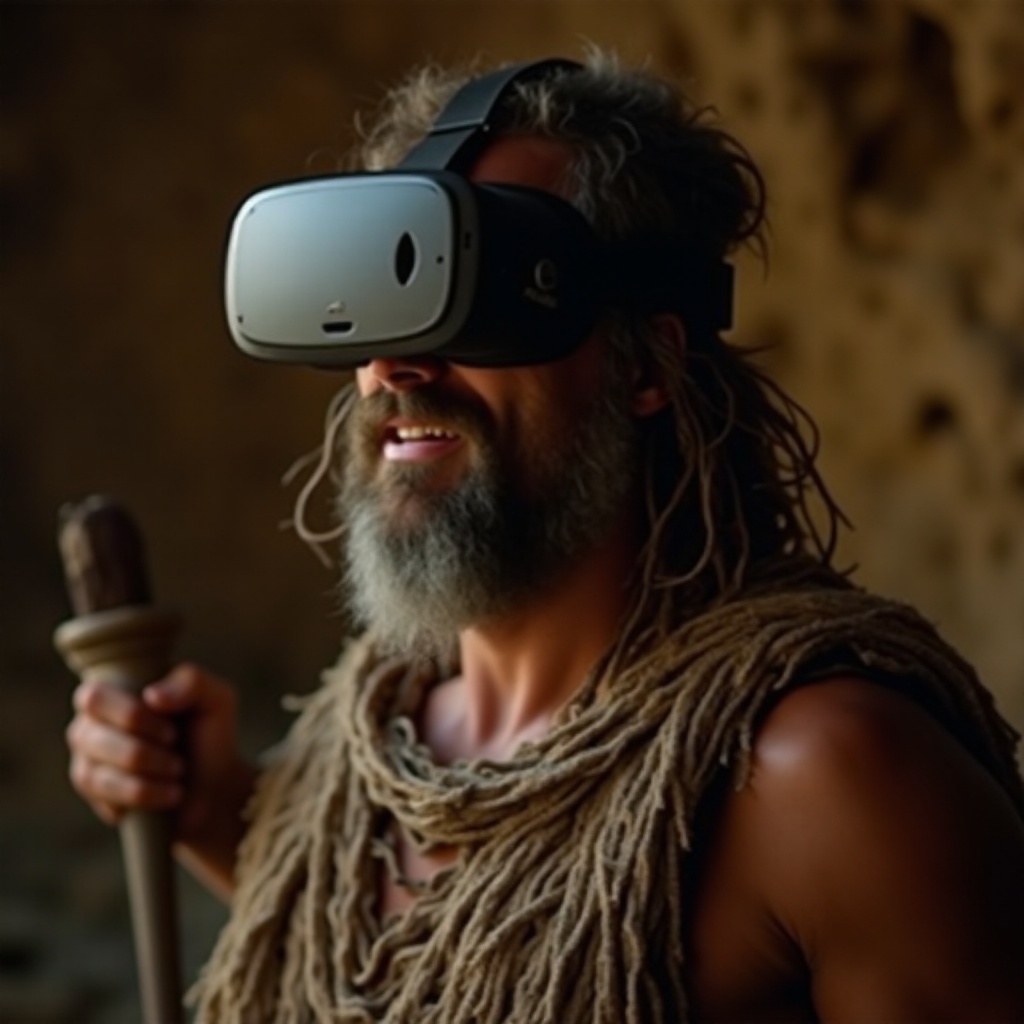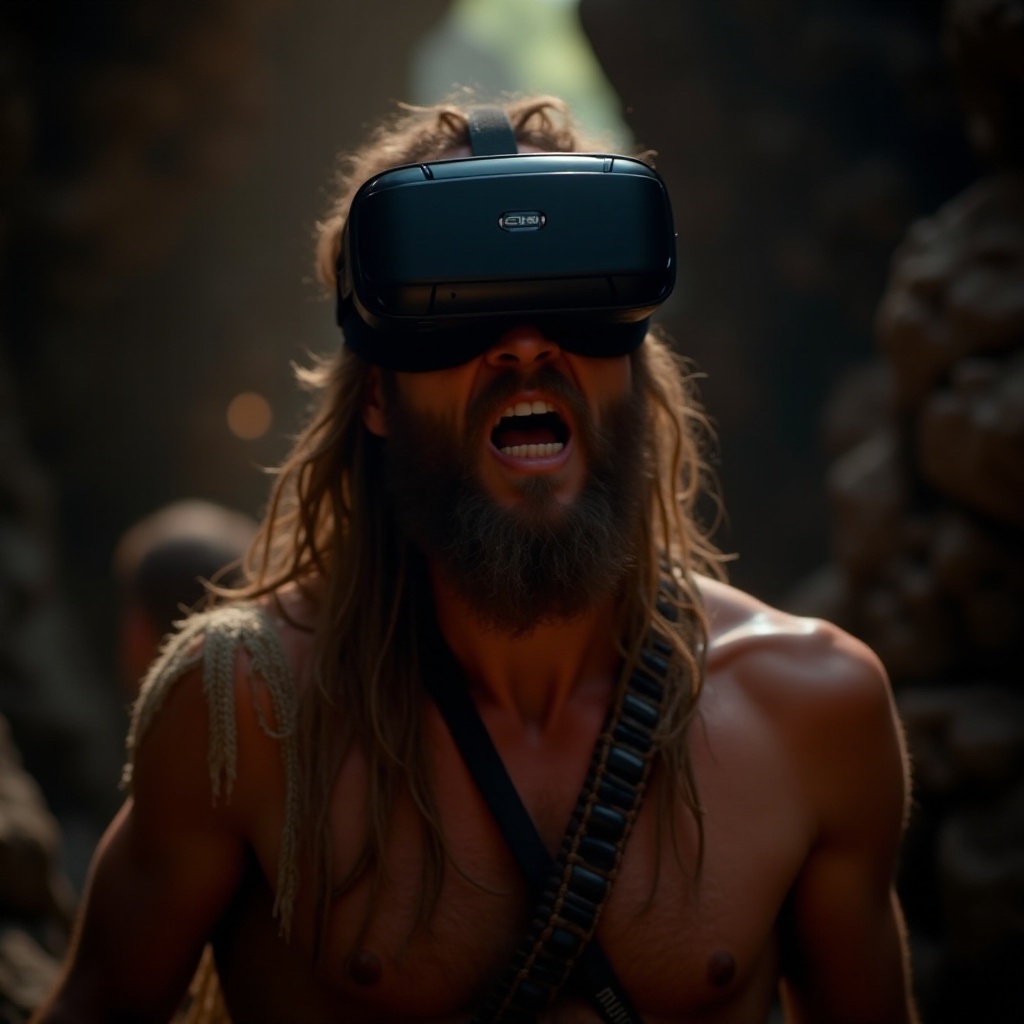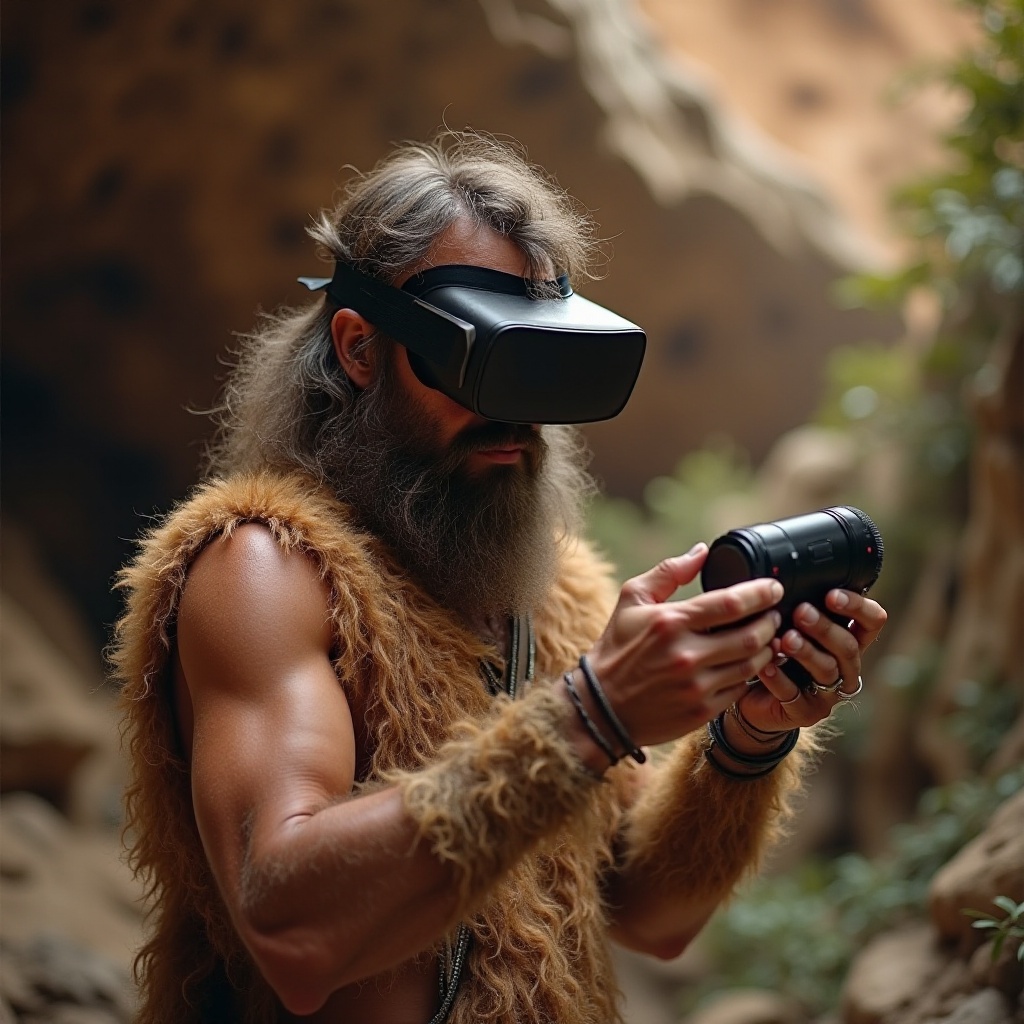Introduction
Imagine transporting a caveman from the prehistoric era and handing him a modern VR headset. The thought alone is both fascinating and perplexing. This scenario provokes interesting questions about sensory experiences across vast timelines. Understanding this juxtaposition deepens our appreciation for human evolution and technological advancements. Let’s explore the sensory overload a caveman might encounter stepping into the simulated worlds of Virtual Reality (VR).

The Caveman’s World and Sensory Experiences
Cavemen lived in a world dominated by basic sensory stimuli. Their environment was rife with the raw elements of nature – the rustling of leaves, the crackling sound of fire, the scent of freshly killed game, and the robust flavor of wild berries. Visual experiences were limited to the vast expanse of the natural landscape with varying hues depending on the time of day or season.
Sounds played a crucial role in the survival and social interactions of prehistoric humans. The cacophony of wildlife, the crack of a breaking twig indicating impending danger, and the subtle sounds of hunting were essential auditory signals. Similarly, the sensory experience included tactile feedback, like the rough texture of stones used for tools, or the warmth of a fur covering their body.
These elemental interactions defined their sensory universe, shaping their perceptions and responses. The physical world offered limited but profound stimuli, fostering a survival-focused sensory adaptation.
The Modern VR Headset Experience
In stark contrast, modern VR headsets provide a high-tech sensory feast. VR transports users into digitally created realms, offering a wide array of experiences from realistic simulations to fantastical worlds. Visual stimulation through VR goggles encompasses a higher resolution and wider field of view, creating immersive environments that can closely mimic reality or entirely fictional landscapes.
Sound design in VR further augments this immersive experience. Surround sound technology allows for directional audio cues, enhancing the realism and depth of auditory stimuli. The flexibility to replicate environmental sounds – from bustling city streets to serene forest ambiances – caters to an array of experiences.
Moreover, advanced VR systems incorporate haptic feedback, adding a tactile dimension to interactions within virtual environments. Users can feel the impact, grip objects, and sense environmental textures, bridging the gap between seen and felt. These multilayered sensory simulations construct a rich tapestry of experience distinct from the minimalist sensory world of our prehistoric ancestors.
Sensory Overload – How a Caveman Might React
Introducing a caveman to a VR headset would likely result in overwhelming sensory overload. The visual complexity alone – enhanced colors, intricate details, and fast-moving images – would challenge the fundamental processing capacity honed by simpler, natural stimuli. Modern digital imagery would initially bewilder and confound their visual cortex.
Auditory experiences within VR could equally baffle a caveman. The ability to hear high-fidelity sounds from multiple directions simultaneously is unprecedented in natural settings. This complexity could trigger confusion or even distress, as their brain attempts to interpret and prioritize unfamiliar and complex acoustics.
Haptic feedback technologies present another layer of sensory stimuli that could be distressing. Feeling simulated textures or virtual impacts could seem magical, threatening, or simply incomprehensible. The combined effect of these sensory elements would likely overwhelm the primitive nervous system, potentially triggering fight-or-flight responses typical of unexpected threats.
Observing such reactions gives insight into how sophisticated our current sensory integrations have become, echoing centuries of technological and cognitive evolution that allows us to interact fluidly with modern technology.

Comparative Analysis – Caveman’s Sensory World vs Modern Day
Comparing a caveman’s sensory world with modern-day experiences highlights the vast differences in sensory processing. The caveman’s world was rooted in survival, with each sense attuned to immediate and practical stimuli. Modern humans, however, navigate a richer tapestry of stimuli, driven more by convenience, recreation, and information acquisition rather than the immediate threat of survival.
In the prehistoric context, sensory engagements were direct and necessary for survival. In contrast, modern technology, including VR, introduces complex and often abstract sensory experiences, expanding the scope of what humans can perceive and respond to. This divergence underscores how human evolution has been paralleled by the evolution of sensory expectations and experiences.
Moreover, this comparison emphasizes the adaptability of the human sensory system. Our brains have developed to accommodate a diverse range of stimuli, a capacity rooted in the gradual accumulation of sensory experiences over millennia. The caveman’s response to VR underlines the contrast between simple, survival-centric sensory processing and the sophisticated and often recreational sensory engagement of modern times.

Conclusion
The thought experiment of giving a caveman a VR headset illustrates the incredible journey of human sensory evolution. What is a commonplace leisure activity for modern humans would be an extraordinary and overwhelming experience for our prehistoric ancestors. This comparison not only celebrates technological progress but also highlights our evolutionary adaptability and the ever-expanding boundaries of human experience.
Frequently Asked Questions
How would a caveman’s brain process modern technology?
A caveman’s brain, adapted to simple, survival-oriented stimuli, would likely struggle to process the complex, high-definition visuals, sounds, and tactile feedback provided by modern technology, resulting in sensory overload and confusion.
What differences exist between prehistoric sounds and VR experiences?
Prehistoric sounds were natural, straightforward, and essential for survival. In contrast, VR offers layered, directional, and often high-fidelity auditory experiences that replicate or create entirely new environments, far beyond the scope of natural sounds.
What are the psychological impacts of VR technology on users?
VR can induce strong psychological effects, ranging from enhanced immersion and entertainment to disorientation or VR-induced motion sickness. It highlights the brain’s flexibility in navigating artificially created sensory experiences but also points to limitations and areas where sensory processing can be challenged.

